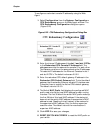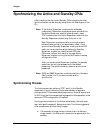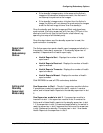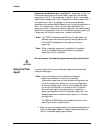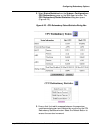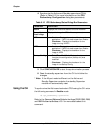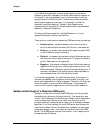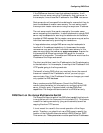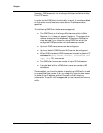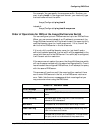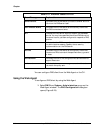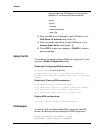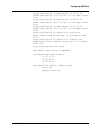
8-2 Avaya P550R, P580, P880, and P882 Multiservice Switch User Guide, v5.3.1
Chapter
In the Recursive approach, a client sends a query to the server.
Assuming recursion is enabled, the server then looks for resolution
first locally in its own database, then in its local cache, finally by
going through the DNS tree until it finds a server that can give an
authoritative answer to the query. In this model, the client is
referred to as a Stub Resolver. Typically, Stub Resolvers are
implemented on devices with limited resources such as embedded
systems or Personal Computers.
The Avaya Multiservice switch is a Stub Resolver, i.e. it only
supports a Recursive lookup not Iterative.
There are four most common answers a DNS server can provide are:
■ Authoritative - a positive answer returned to the client
with the Authoritative Answer (AA) bit set in the response.
■ Positive - an answer that contains the resource record (RR)
or list of RRs that match the query.
■ Referral - an answer that contains a list of alternate servers
the client can use to resolve the name. This type of answer is
given if Recursion is not supported.
■ Negative - this answer indicates that an Authoritative server
reported that the name (or record type) does not exist in the
DNS name space. The server can be the preferred server or, if
recursion is enabled, that another server responded back to
the preferred server with the authority bit set.
In the Iterative approach, the client sends a query to the server. If
recursion is disabled, and the server cannot answer the query, the
server will responds with a Referral answer. The client will then use
that information to query another DNS server. This process will
continue until a server responds with an Authoritative response.
Sample walkthrough of a Recursive DNS query
Typically, a network will have a local DNS server which provides
translations for devices in the local network. That server will also
“know” the IP address of the Root servers. When a client attempts to
communicate with a device by its name, the IP portion of the
protocol stack will recognize that a name (not an address) has been
specified. It will then contact the local DNS server and request the
name be translated into an IP address. For example: if a user types
ping www.avaya.com
, that name will be sent to the local DNS
server. If the DNS server has that information, it will respond with
the appropriate IP address.



